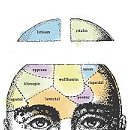From PACEs Connection: “Because 18-year-old Payton Gendron provided in his 180-page diatribe a motive for shooting 10 people in Buffalo, NY, on Saturday night, police didn’t need to search for one, as they often have other in mass shootings. But using motive to prevent mass shootings will just get you a useless answer to the wrong question.
The right question is: What happened to this person? What happened to a beautiful baby boy to turn him into an 18-year-old killer spouting racist screed?
In those questions—and looking at the answers through the lens of positive and adverse childhood experiences—lie our solutions.
In a 2019 Los Angeles Times article, ‘We have studied every mass shooting since 1966. Here’s what we’ve learned about the shooters,’ Jillian Peterson and James Delaney wrote: ‘First, the vast majority of mass shooters in our study experienced early childhood trauma and exposure to violence at a young age. The nature of their exposure included parental suicide, physical or sexual abuse, neglect, domestic violence, and/or severe bullying.’
Research clearly shows that the road that leads from a precious infant becoming an abused or neglected child who grows up to become a distressed murderer is predictable. That was revealed in the CDC-Kaiser Permanente Adverse Childhood Experiences (ACE) Study.
The ACE Study showed a remarkable link between 10 types of childhood trauma and being violent or a victim of violence, as well as experiencing the adult onset of chronic disease and mental illness.
. . . The point is — and the science is irrefutable now — just as a bullet rips through flesh and bone, a child experiencing ongoing encounters that cause toxic stress, without positive intervention to help the child, will suffer damage to the structure and function of their brain.
This toxic stress affects health and behavior . . . People with high ACE scores are more likely to be violent, to have more marriages, more broken bones, more drug prescriptions, more depression, and more autoimmune diseases. People with an ACE score of 6 or higher are at risk of their lifespan being shortened by 20 years.
The effects of ACEs begin showing up in childhood. Kids experiencing trauma act out. They can’t focus. They can’t sit still. Or they withdraw. Fight, flight or freeze—that’s a normal and expected response to trauma. So, they have difficulty learning. The schools that respond by suspending or expelling them just further traumatize them. When they get older, if they have no positive intervention from a caring adult at home or in school, in a clinic or other organization who is trained to understand trauma, they find unhealthy ways to cope. They turn to addictions of all types—alcohol and other drugs, violence, stealing, lying, overeating, gambling, thrill sports, etc.—to soothe themselves to endure their trauma and the effects of their trauma, such as depression or violence.
. . . Healthy people lead healthy lives and aren’t tempted to harm themselves or others. Healthy people have few or no ACEs, and many positive childhood experiences, such as nurturing parents, a safe environment in which to live, and other caring adults.
. . . The good news is that people can heal from trauma, including ACEs. The better news is that we can prevent it.”

***
Back to Around the Web











